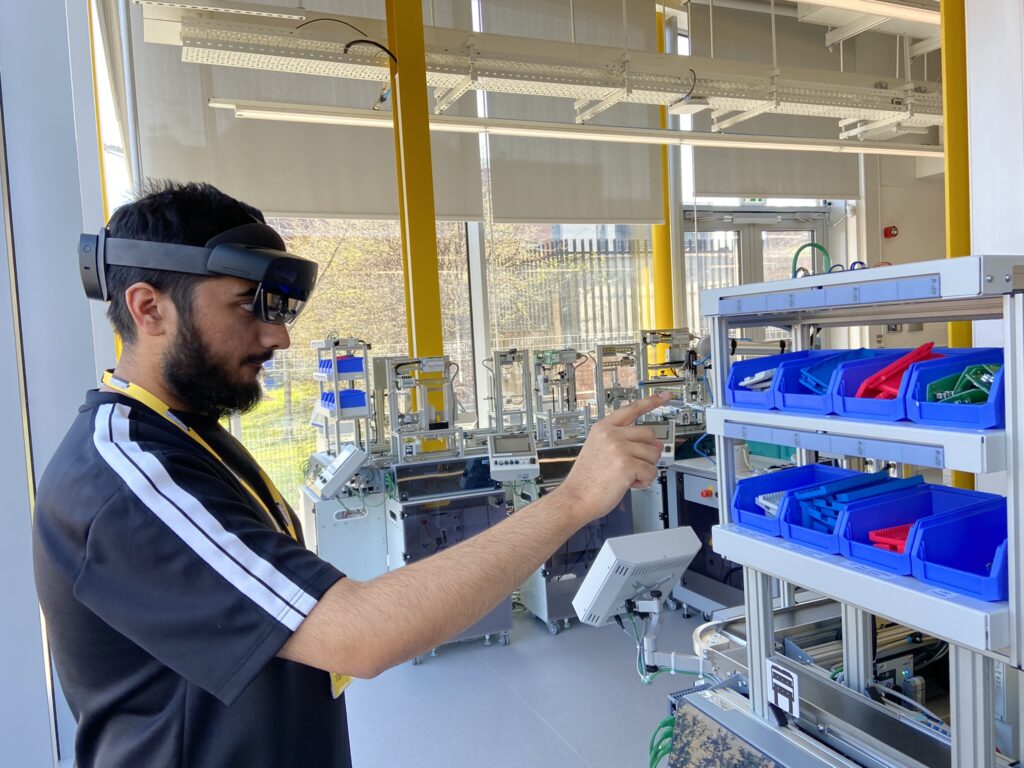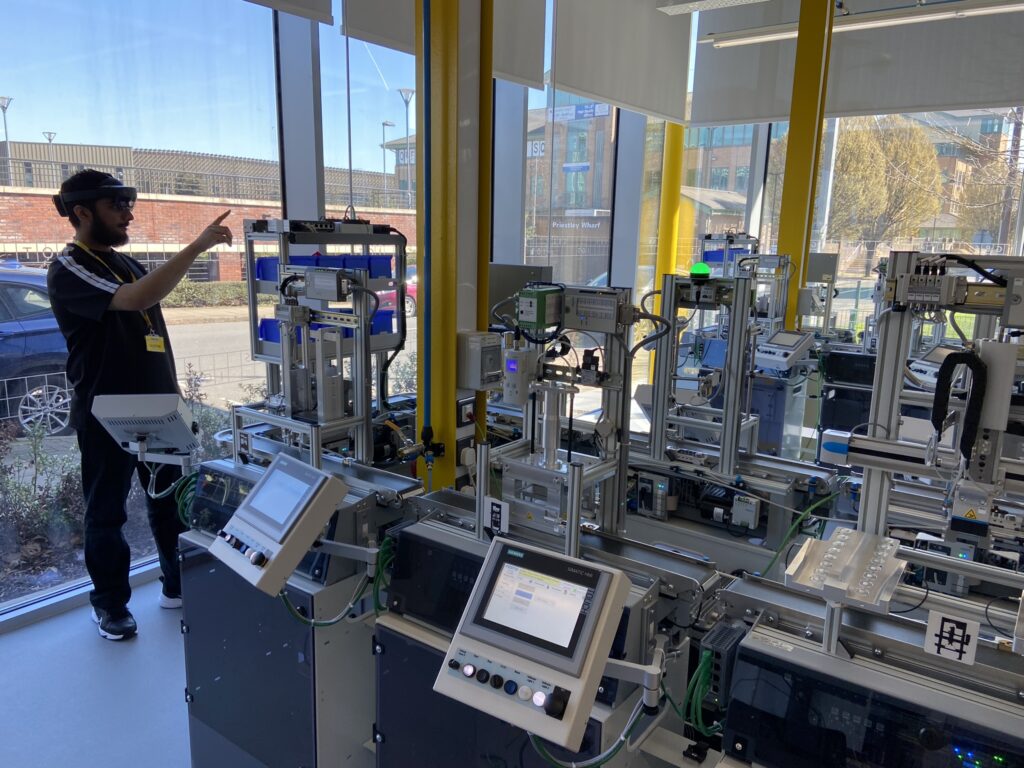Humza, an Aston University student, is currently utilizing the Greater Birmingham and Solihull Institute of Technology (GBSIoT) Cyber Physical Manufacturing Rig for his dissertation on the use and effectiveness of augmented reality to aid in the assembly process within a Festo Cyber-Physical manufacturing lab. This project is a part of his individual major project module for his Bachelor of Engineering in Design Engineering degree.

The GBSIoT Cyber Physical Manufacturing Rig is a state-of-the-art facility that integrates the latest advances in digital and physical manufacturing technologies. It provides a platform for students like Humza to experiment with cutting-edge manufacturing techniques and technologies, including augmented reality.
Humza’s project aims to explore the potential of augmented reality (AR) technology to aid in the assembly process within a Festo Cyber-Physical manufacturing lab. AR technology has already found numerous applications in various industries, including healthcare, education, and entertainment. However, its use in manufacturing is still relatively unexplored. Humza’s project seeks to bridge this gap and evaluate the efficacy of AR technology in improving the assembly process in manufacturing.
The Festo Cyber-Physical manufacturing lab is an ideal testbed for this project. The lab is a scaled-down version of a real-world manufacturing plant, complete with conveyor belts, robotic arms, and other assembly equipment. Humza is using AR technology to overlay digital instructions and guidelines on the physical equipment to aid operators in the assembly process.
The use of AR technology in manufacturing has several potential benefits. First, it can improve the accuracy and speed of the assembly process by providing real-time guidance and feedback to operators. Second, it can reduce the learning curve for new operators by providing them with intuitive and user-friendly instructions. Finally, it can enhance safety by providing operators with warnings and alerts in real-time.
Humza’s project has the potential to contribute significantly to the field of manufacturing and digital engineering. By evaluating the use and effectiveness of AR technology in the assembly process, Humza can provide valuable insights and recommendations for the wider manufacturing industry. His project also demonstrates the importance of interdisciplinary collaboration between engineering and digital technologies, highlighting the critical role of innovation and experimentation in advancing manufacturing.

Humza’s dissertation on the use and effectiveness of augmented reality to aid in the assembly process within a Festo Cyber-Physical manufacturing lab is a testament to the cutting-edge research being conducted at Aston University, a core partner of GBSIoT. His project represents a significant step towards bridging the gap between manufacturing and digital technologies, and it has the potential to contribute significantly to the field of engineering and innovation. We wish Humza all the best in his future endeavors and look forward to seeing the results of his project.

